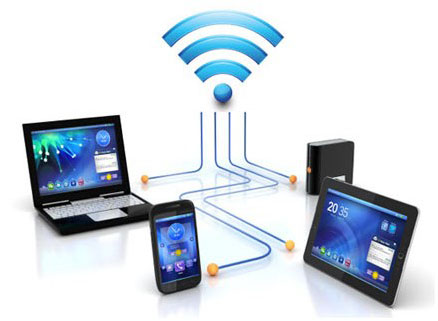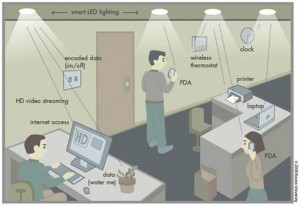Li-Fi – A Wireless Technology That is 100x Faster Than Wi-Fi
Today internet has become a basic life support system just like electricity and water, life without it seems like impossible. With the advancement of technology the internet that could be only used by a stationed port is now available on a go, thanks to the technology called “Wi-Fi”.
Wi-Fi And Its Short-comes:
Wi-Fi technology has its origins in a 1985 ruling by the U.S. Federal Communications commission. It’s a networking technology that uses radio waves to allow high-speed data transfer over short distances. Wi-Fi can also be used to provide wireless broadband internet access to many devices at the same time, such as laptops, computers, mobile phones and gaming consoles. Wi-Fi-enabled devices are able to connect to the internet when they are near a Wi-Fi access point, called “hot spots.” Hot spots have now-a days become common, with many public places like airports, hotels, bookstores, and coffee shops offering free Wi-Fi access.
But like every technology it too has its short-comes or disadvantages:
-
Security – To combat this consideration, wireless networks utilizes various encryption technologies available. But Some of the more commonly utilized encryption methods are known to have weaknesses that can be compromised.
-
Range – The range of a 802.11g network is on the order of tens of meters, while it is sufficient for home, it is insufficient in a larger structure. To obtain the additional range, additional access points are purchased, costs for these items can add up quickly.
-
Reliability– Like all radio frequency transmission, wi-fi signals are subject to a wide variety of interference and complex propagation effects which are beyond the control of network administrator.
-
Speed – The speed of most wireless networks (1-54 Mbps) is far slower than the slowest wired networks (100Mbps).
To handle these short-comes and to create a new era of wireless networking, researchers have come up with a new technology known as “Li-Fi” .
Light Fidelity (Li-Fi):
Li-Fi was invented by Harald Haas from the University of Edinburgh, Scotland in 2011, when he demonstrated that by flickering the light from a single LED, he could transmit data greater than any cellular tower. It is a bidirectional, high speed and fully networked wireless communication technology similar to Wi-Fi. It uses visible light communication instead of radio frequency waves spectrum and is a part of Optical wireless communications technology, which can carry more information, and has been proposed as a solution to the R-F-bandwidth limitation.
Light Fidelity (LiFi) is a wireless optical networking technology that uses visible light from LED’s for data transmission. Visible Light Communication involves transmitting data using light visible to the human eye. LiFi work by flickering light at a rapid rate that is invisible to the human eye. To connect to a Li-Fi network, devices must be equipped with the Microchip that has the capability to recognize the LED light signals and can use them to transfer data. Security aspect of VLC is it works only when the device has a line of sight to the light transmitter and as we all know, light cannot penetrate walls as radio signals can, so drive-by hacking of wireless signals would be very difficult.
Harald Haas demonstrated and explained its working in 2011 TED Talk:
Future Of Li-Fi:
Scientists have taken Li-Fi out of the lab for the first time, trying it in offices and industrial environments in Tallinn, Estonia, which was reported to be a success. They were able to achieve data transmission at 1 GB per second which is 100 times faster than current average wi-fi speed.
Li-Fi can not completely replace Wi-Fi in the coming decades as our homes, offices, and industry buildings already have infrastructure to provide Wi-Fi, and to replace it with Li-Fi technology isn’t particularly feasible so the idea is to use both technology together to achieve more efficient and secure networks.
Li-Fi experts reported last month that:
“Haas and his team have launched PureLiFi, a company that offers a plug-and-play application for secure wireless Internet access with a capacity of 11.5 MB per second, which is comparable to first generation Wi-Fi. And French tech company Oledcomm is in the process of installing its own Li-Fi technology in local hospitals.”
We sincerely hope that this technology could achieve a team-up with the wi-fi and we could get to use such a wonderful, speedy and secure wireless networking in near future.






